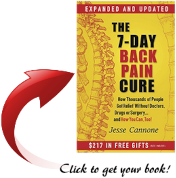Chronic pain is a complex problem that a significant number of people experience. It is like a constant, long-lasting pain that can be hard to deal with and fend off. One major reason for this condition is something we have discussed on past articles called inflammation. It can contribute to the development and persistence of chronic pain by sensitizing nerves, amplifying pain signals, and promoting tissue damage. Novel anti-inflammatory therapies have been explored that may hold significant potential for managing chronic pain. Before we dive deeper into this topic, I want to let you know that I am not a medical professional, and what follows is not medical advice. I hope the information provided may be of value and of interest to you.

Scientists are trying to find new ways to help people with chronic pain, and here are some approaches being explored:
- TRPV1 Modulators
- Cannabinoids
- Neuroimmune Modulators
- Gene Therapy for Pain Control
- Bioelectronic Medicine
TRPV1 Modulators. There is a special receptor in our body called TRPV1, also known as Transient Receptor Potential Vanilloid 1. It is a specialized protein molecule involved in sending pain signals and causing inflammation. Researchers are investigating modulators that can selectively target TRPV1 to reduce pain and inflammation without affecting other physiological functions. Modulators refer to substances or agents that have the ability to influence or regulate the activity, and in this case, of the TRPV1 receptor. A receptor is like a “messenger” or a “sensor” in our body that helps it detect and respond to specific signals or stimuli. TRPV1 is a particular type of receptor in our body that is designed to detect and respond to certain types of sensations or stimuli. It plays a role in sensing things like heat, pain, and other sensory information, and when it detects these signals, it sends a message to the body to react accordingly, like feeling pain or responding to changes in temperature. Receptors are essential for our body to interact with and understand the world around us.
Cannabinoids. Have you heard of cannabis? It is a plant that some people use for medical purposes. Scientists are studying certain compounds from this plant, called cannabinoids, to see if they can help with pain and inflammation. Novel cannabinoid-based therapies are being developed to target specific cannabinoid receptors, such as CB1 and CB2, to reduce inflammation and alleviate chronic pain. CB1 and CB2 are two primary types of cannabinoid receptors, and they are specialized proteins found on the surface of cells throughout our body, especially in the nervous system and immune system. In addition to their anti-inflammatory effects, cannabinoids may also have analgesic (pain-relieving) properties.
Neuroimmune Modulators. Neuroimmune modulators, aside from cannabinoids, are a class of substances or compounds that can influence the communication and interaction between the nervous system and the immune system. Chronic pain involves complex interactions between our nervous system and immune system. Researchers are looking for special modulators that can change how these systems interact, so they can reduce inflammation and pain. These modulators may act on immune cells, such as microglia, to reduce their activation and subsequent release of pro-inflammatory substances. They play a vital role in maintaining the balance and proper functioning of both systems, particularly in the context of chronic pain. If you want to take a deeper dive into this topic, you can research these topics like glucocorticoids, immunomodulatory drugs, cytokine inhibitors, Anti-TNF and Anti-IL-6 agents, neuropeptides modulators, microglial inhibitors, and biologic therapies (also known as “biologics”) as it pertains to managing chronic pain.
Gene Therapy for Pain Control: Gene therapy is an innovative approach being researched and developed as a potential strategy to address chronic pain and inflammation. This therapeutic approach involves introducing specific genes into target cells or tissues to alter their function and produce beneficial effects. In the context of chronic pain and inflammation, gene therapy aims to modulate pain pathways and reduce inflammatory responses by delivering genes that encode certain proteins or neurotransmitters involved in pain modulation and anti-inflammatory processes. Simply stated, it focuses on delivering special genes that can make proteins or chemicals to fight inflammation and pain in specific parts of our body. One advantage of gene therapy is its potential for a targeted approach. Scientists can design gene therapy treatments to act specifically on the cells or tissues involved in chronic pain and inflammation, minimizing potential side effects to other parts of the body. Gene therapy also has the potential for long-lasting effects. Once the therapeutic genes are integrated into the target cells, the desired effects may persist over an extended period, reducing the need for frequent treatments and doctor visits.
Bioelectronic Medicine: Bioelectronic medicine combines neuroscience, molecular biology, and bioengineering to develop devices that can modulate the body’s neural circuits to treat diseases. In the context of chronic pain, researchers are exploring the use of devices such as neurostimulators and neuro-modulatory implants that can target specific neural pathways involved in pain and inflammation, providing pain relief, and reducing inflammation at the source. In a nutshell, they are exploring the potential of bioelectronic devices to provide targeted and effective pain relief by directly interfacing with the nervous system of our body. Sounds a bit unnerving, and like a page from a science fiction novel! All kidding aside, one of the significant advantages of bioelectronic medicine is its ability to offer a targeted approach to pain management. These devices can be precisely placed and programmed to focus on specific neural circuits involved in pain and inflammation, without affecting other parts of the body. Other advantages are the potential for personalized treatment plans, offers a non-drug alternative for pain management, and may have fewer side effects as compared to certain medications used for chronic pain.

Remember, finding new ways to help with chronic pain is still a work in progress. Everybody’s pain is unique, so treatments might vary from person to person. Always consult with your doctor and/or medical professional who specialize in pain management to address your needs. They can give the most up-to-date information and determine the best treatments for dealing with your chronic pain issues.
To Your Success & Freedom,
Glenn Shimabukuro



